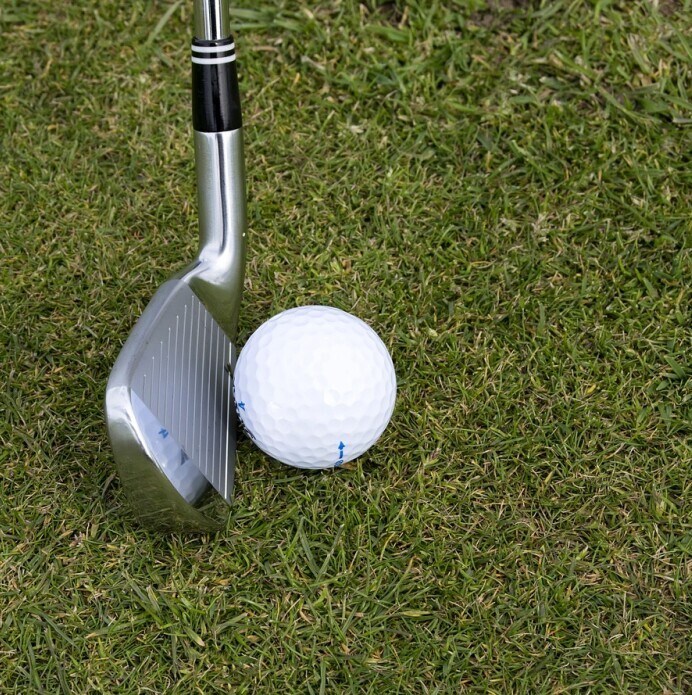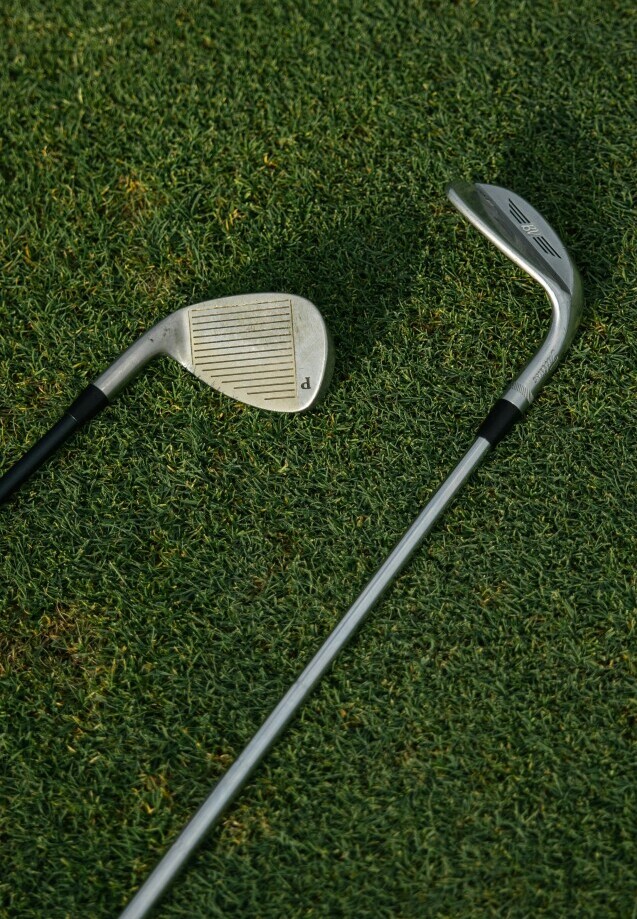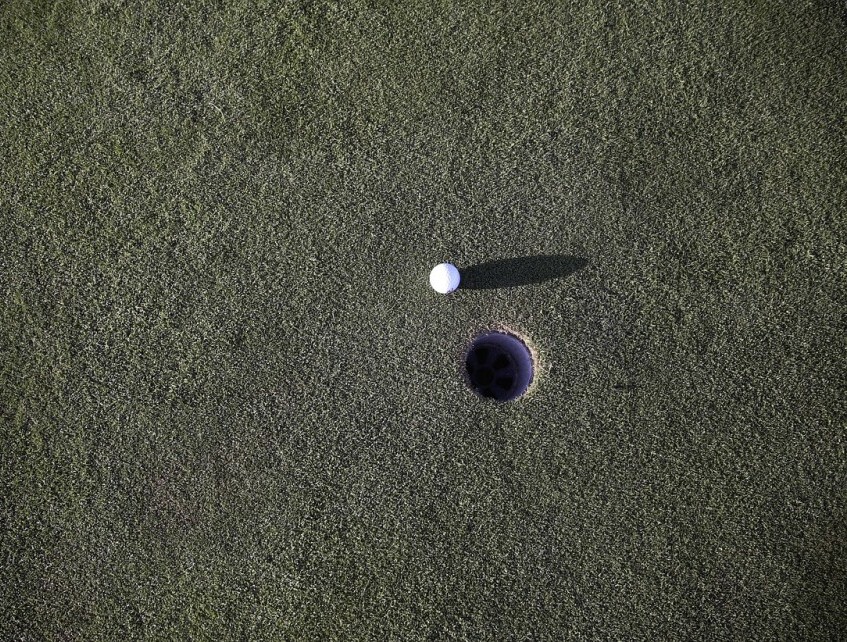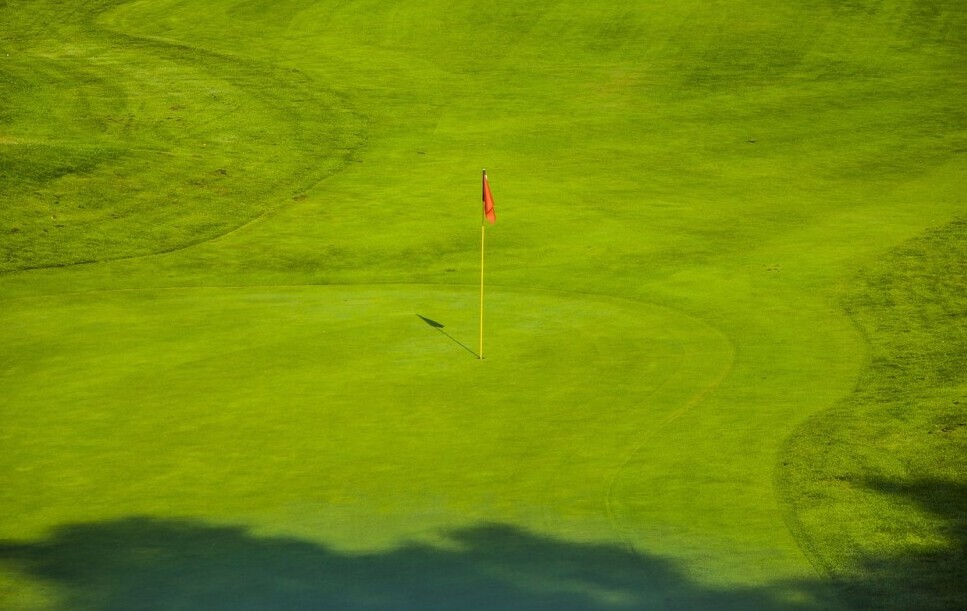What’s A Wedge In Golf?


Fore! Quick note: a few links here are affiliate links. If you snag gear through them, I earn a small commission — no extra strokes added to your game.
Time to break down wedges. They’re those funky-looking clubs with the angled faces you’ve probably seen but maybe weren’t sure how to use. A wedge in golf is a type of iron designed for short-distance shots. Think of them as the precision tools in your golf bag. They will become a vital tool in your golf arsenal. Let’s get into what a wedge is and why you need one, golf viking style.
Wedges have been around for quite a while. The modern wedge got its major evolution in the 1930s when Gene Sarazen added extra mass to the bottom of the club. This made it easier to get under the ball, making those tricky shots around the green way more manageable.
Typical wedges have distinct designs focusing on specific elements. The clubface, for instance, has more loft compared to regular irons. This loft helps lift the ball high into the air quickly, providing better control over short shots. These wedges are designed to hit balls high in the air and land softly on the green.
Another standout feature is the wide sole, which helps the club glide through grass or sand without digging in too much. Different wedges have varying degrees of bounce, which affects how the club interacts with the ground. We will get into the difference in wedges in the next section. Basically, if you’re looking to improve your short game—getting your ball onto the green from 100 yards or less—wedges are your go-to clubs.
Learning how to hit wedges is especially important when facing how to play uneven lies in golf.
Ready to level up your golf game? Click here.

Different Types of Wedges and Their Unique Purposes
Pitching wedge: Often the first wedge a golfer gets familiar with and one you should too. With a loft between 44-48 degrees, it’s perfect for shots ranging from 110-125 yards(with a good swing and contact, of course). Its design allows for longer, controlled shots with a bit more height than your typical iron. Great for full swings and approach shots when you are close to the green.
Sand wedge: A real lifesaver in those dreaded bunker situations. With a loft of 54-58 degrees and a beefier sole, it helps you glide through sand and thick grass. Not only is it essential for escaping bunkers, but it’s also handy for pitch shots around the green and getting under the ball in rough terrain. So you will want this club for when you find yourself in the sand, but you may decide to use this in certain situations close to the green.
Lob wedge: If you need to make a high, soft landing shot, this is your club. With a steep loft between 58-64 degrees, it’s designed to get the ball up quickly and stop it on a dime. Great for tight pin positions or when you need to clear an obstacle. It’s your trick shot artist of the golf world. You may not have this club in your first set when you are just starting out. But when you get to a point where you want to hit accurately and drop your ball softly on the green you may consider adding this club to your golf bag.
Gap wedge: Bridging the distance between the pitching wedge and the sand wedge, the gap wedge (50-54 degrees) fills a crucial yardage gap. Perfect for those shots that are too short for a pitching wedge but too long for a sand wedge. It offers versatility for mid-range approach shots. If you are undecided about the right wedge, the gap wedge may help you make your decision. As you get more experienced you will feel when you may need to use this in certain situations.
Each type of wedge has its own strengths and weaknesses, and understanding these can significantly improve your game. Think of them as specialized tools; knowing when and how to use each one can be a game-changer. It’s not necessary to have every single wedge in your golf bag from the start, but the more you hone your golf game you may want to consider adding a few to help add precision to your game. I would recommend starting out with a pitching wedge and a sand wedge as you work on your skills. You can add other wedges to your bag as you feel that you are ready to use them.
Different wedge choices can impact how you manage your golf scores explained.

Mastering the Use of Wedges: Techniques and Tips
Knowing when to pull out a wedge can make a massive difference in your score. Wedges are perfect for short-distance situations where precision is key. For instance, if you’re close to the green and need to pop the ball over a bunker, a lob wedge can help you do that with minimal roll. When chipping from just off the green, a pitching wedge might give you the control you need to nestle the ball close to the hole.
Each wedge has its technique. With a pitching wedge, a full swing might be ideal for longer approach shots, but dialing it back a bit lets you finesse those shorter ones. The sand wedge thrives on an open stance and a more upright swing path to get out of bunkers. Lob wedges benefit from a high, soft touch, almost like you’re trying to get the ball to drop gently from the sky. So you will actually be adjusting your shot depending on which wedge you will be using.
Common mistakes to watch out for? Avoid going too “handsy” with your shots; let the club do the work. You shouldn’t need to use your arms or wrists heavily in your swing, let your body do the work. Also, don’t neglect your stance. Consistent posture and alignment are key in executing precise shots. Another tip: practice different distances with each wedge to understand their range better.
Knowing exactly how far you can hit each wedge can save you strokes. This was huge for me as I improved at golf. Once you have an idea as to the average range you hit each club, you will begin to know what club you will need in each situation.
Choosing the right wedge comes down to the shot you face. More loft is excellent for getting over obstacles, while a less-lofted wedge provides more roll once the ball hits the green. Carrying at least two different types of wedges ensures you’re prepared for any short-game scenario.
Continuously practicing with your wedges can build confidence and help you tackle any short-game challenge with ease. Let’s wrap this up so you can start working on your wedge shots.
The loft of a wedge can help you navigate tricky conditions, such as how to golf in wind.

Conclusion: Elevate Your Golf Game with the Right Wedges
By understanding the different types of wedges and their specific purposes, you’re on the right path to refining your golf game. Each wedge—whether it’s a pitching wedge, sand wedge, lob wedge, or gap wedge—plays a unique role in helping you navigate various challenges on the course.
Mastering these clubs involves more than just knowing when to use them. It’s about practicing the techniques, understanding your swing, and consistently improving your touch. The right wedge in your hand can be the difference between a tricky shot and a spot-on placement right next to the pin. Each wedge can have its own stance and style to work with. You will get used to how to go through your shot process with each wedge you use.
As you get more comfortable with each wedge, you’ll notice your confidence growing, and your scores likely improving. So don’t hesitate to spend time at the range, honing your skills and experimenting with each type of wedge in different scenarios.
Your wedges are some of the most versatile and useful clubs in your bag. Making the most of them can significantly impact your overall performance. Keep practicing, stay patient, and soon you’ll find that those tricky short shots become some of the most satisfying parts of your game. I’ll see you on the chipping green!
You’ll want a quality wedge for your game, so here are some of the best pitching wedges available.


